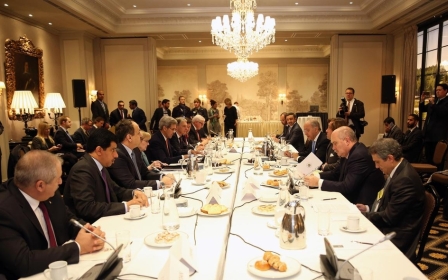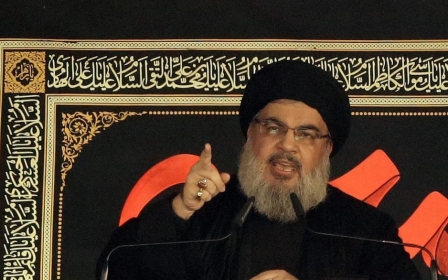Saudi's real reason for fearing Iran lies closer to home

The predominant explanation of the Saudi confrontation with Iran is placed within a framework of a Sunni-Shia competition to gain hegemony in the region. A close examination of the facts, however, reveals that Riyadh’s foreign policy is an extension of its domestic politics and is shaped by its assessment of the internal risks and threats faced by the political elite.
There has been a centuries-old rift between Shia and Sunni Muslims. But the most hostile mutual stance exists between Shia Muslims and Wahhabis, a minority puritanical movement within Sunni Islam. The majority of Wahhabis (interchangeably referred to as Salafis by observers, though this is not exactly accurate) are based in Saudi Arabia. Leading clerics of the two traditions in Iran and Saudi Arabia deem each other's reading of Islam as deviant.
The number of adherents to Salafism varies according to different sources. One source provides a figure of 17 million against a total 100 million Shia Muslims.
The emergence of the “export of the revolution” doctrine shortly after the Islamic Revolution’s victory in 1979 became a major cause of tension between Iran and Saudi Arabia, although the leader of the Iranian Revolution, Ayatollah Ruhollah Khomeini, would emphasise that the export of the revolution would be by word and not by sword.
Contrary to popular belief, this doctrine is not exclusive to the revolutionary faction or hardliners. This vision is shared by even the moderate members such as Mohammad Javad Zarif, the Iranian foreign minister. In his lengthy 2012 interview, published as a 360-page book in Farsi titled Mr Ambassador, Zarif maintains that “I don’t believe Iran can achieve this goal [of becoming a regional power] without its revolutionary goals. In the best-case scenario, we would become a country like Pakistan.” This theory caused serious concerns in Saudi Arabia from the inception of the Islamic Republic in Iran.
Saudi support for Saddam
The Iranian-Saudi hostilities peaked during the Iraqi invasion (1980-1988) when Saudis supported Iraq by pouring billions of dollars to finance Saddam Hussein. Iraq’s invasion of Iran and its use of chemical weapons cost Iran hundreds of thousands of lives and hundreds of billions of dollars.
Meanwhile, Iran viewed the warm relations between the Saudis and the United States as a betrayal to the Islamic world. The Saudis, Iranians argued, supported the far-fetched military presence of the US in the region, which would result in its dominance over the Muslims and giving them the chance to destabilise Iran’s Islamic system.
In 1981, Ayatollah Khomeini urged the pilgrims to Hajj – the annual Islamic pilgrimage to Mecca – to carry out demonstrations under the banner of “disavowal of the pagans” - denouncing Israel and the United States. He urged Muslims to “break America's teeth in its mouth”.
The rally, which attracted the attention of hundreds of thousands of Muslims who had gathered in Mecca from around the world, had two goals. The first was to create an anti-American political movement in the Islamic world in the framework of exporting the revolution. The second was to depict the US as the enemy of Islam and discredit the Saudi government, before the Muslims, as the close ally of the Americans in the region.
Violence in Mecca
Then came 31 July 1987. Iranian pilgrims in Mecca massed after Friday’s midday prayers for the “disavowal of the pagans” rally. The pilgrims chanted “Death to America! Death to Israel!” and brandished portraits of their leader, Ayatollah Khomeini. “The Saudi police were reported to have warned them to disperse, then attacked with clubs and gas,” according to the New York Times. Iranians reacted and the scene escalated into a violent clash, followed by a deadly stampede.
The Saudis blamed the violence on the Iranian pilgrims who carried “knives and clubs” and claimed that “not one bullet was fired”. However, the American journalist Robin Wright reported that “many of the Iranian bodies, shown to American and European reporters immediately upon their return to Tehran, had bullet punctures”. As a result of the clashes, 402 people, among them 275 Iranians and 85 Saudis, were killed, according to Saudi officials.
A few days later, Ayatollah Khomeini, in a speech which marked the beginning of an open conflict between the two states, fiercely attacked the House of Saud, the ruling royal family of Saudi Arabia. “How better could we prove to the world that those … [Saudis] can do nothing except ensure the interests of America and Israel? ... If we wanted to prove to the world that the House of Saud government, those Godless Wahhabis, are like a knife that has always penetrated into the Muslims’ hearts, we could not do it so well as the feeble and debilitated Saudi executives have done it,” he remarked.
This brings us to the core of the Saudis’ anxiety and the question of why they are so fearful the expansion of Iran’s influence in the region.
The domestic Shia threat
Estimates of the Shia population in Saudi Arabia range from five to 20 percent. More reliable statistics put the figure at 10 to 15 percent. But as significant as it is, Shia Saudis are concentrated primarily in the Eastern Province, home to Ghawar, the largest oil field in the world.
Adding to the problem, there are numerous reports, including one from the Human Rights Watch, that the Saudi state systematically discriminates against Shia citizens, including in public education, the justice system, religious freedom and employment. Since the 1979 bloody Shia uprising, inspired by the Iranian Revolution that happened in Qatif, there have been several instances of clashes between Shia Saudis and the Saudi police and anti-riot forces, some of which have ended in gun battles.
It is in this context that Riyadh fiercely confronts Iran’s expanding influence, since it views it as a catalyst for its Shia minority to demand more of a political role, which could potentially lead to a disintegration of power and even the downfall of the system. Saudis most likely would not have entered this high-risk and high-cost competition had it not been under the threat of the Shia minority.
There have been some reports by "Middle East specialists” that the Saudis, by not reducing their oil production in this oversupplied oil market “want to put pressure on Iran and to force Moscow to weaken its support for the Assad regime in Syria”. The latter is again aimed at slashing Iran’s influence in Syria and cutting the supply line to Lebanon’s Hezbollah.
If these speculations about the Saudis' impetus to saturate the oil market are valid, or even if this has been their secondary goal as many analysts speculate, this has been an immensely costly race for the Saudis to the extent that the IMF very recently predicted that Saudi Arabia will run out of cash in less than five years, if the current trend continues.
To conclude, the Saudis seek to establish the nature of their conflict with Iran as a sectarian Sunni-Shia one in order to mobilise the Sunni world in their support. However, their conflict with Iran is not only about gaining hegemony to honour and protect the ideological values. Rather, it mainly stems from the perceived threats by internal forces, emboldened by Iran pursuing its export of revolutionary doctrine, to the ruling elite.
- Shahir Shahidsaless is a political analyst and freelance journalist writing primarily about Iranian domestic and foreign affairs. He is also the co-author of Iran and the United States: An Insider’s View on the Failed Past and the Road to Peace.
The views expressed in this article belong to the author and do not necessarily reflect the editorial policy of Middle East Eye.
Photo: File photo of Saudi King Salman (AFP).
New MEE newsletter: Jerusalem Dispatch
Sign up to get the latest insights and analysis on Israel-Palestine, alongside Turkey Unpacked and other MEE newsletters
Middle East Eye delivers independent and unrivalled coverage and analysis of the Middle East, North Africa and beyond. To learn more about republishing this content and the associated fees, please fill out this form. More about MEE can be found here.





